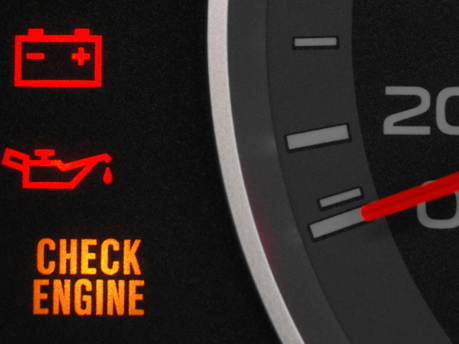How to identify dashboard warning lights
A Guide to Understanding Dashboard Warning Indicators
It’s a heart-dropping moment: a warning light has flashed up your dashboard to indicate that something isn’t quite right with your car. If you’re pushed for time (and money), you may feel tempted to simply get used to your car’s new illumination, and ignore the warning behind it.
However, dashboard warning lights exist for a reason, and each one needs to be attended to promptly. But what does each one mean? Below, we’re explaining what the main dashboard warning lights mean, and what action you need to take when you see one (spoiler alert: it’ll usually mean a trip to a repair centre)...
When should you worry about a warning light?
It’s important to note that when you first start your car, your dashboard will light up Blackpool-style, but all these warning lights should then go off after a few seconds. Warning lights that remain on are the ones we’re talking about here.

ABS
A circle that looks like it’s in brackets, with the letters ABS inside, or simply the letters ABS
Easy to identify is your ABS warning light; ABS stands for Anti-Lock Braking System. This system works to stop your wheels from locking when you start to skid.
While it’s not the be-all and end-all of stopping your car under normal circumstances, when you see this light, you’ll want to make an appointment for a diagnosis quickly. It could indicate a problem with a faulty wheel sensor, low brake fluid, or an electrical fault in the ABS sensor. Your ABS is a safety feature, and it needs to be operational.
Battery
A square with a plus in one top corner, and a minus in the other
As a vehicle with a lot of electrical components, your battery is a vital bit of kit under your bonnet, and this light indicates that it’s not generating the power required to keep everything running.
As soon as you see this flash up, you must pull over and stop as quickly as possible when it’s safe to do so. If it’s not safe for a while we’d recommend turning off all unnecessary electronics within the vehicle. It could mean that there’s a problem with your alternator (which charges the battery), or a damaged connection within the battery itself.
When you see this light, it’s time to call a recovery team to take the next steps - your battery is running on its own charge alone, and will only last for so long.

Brakes
An exclamation point within a circle, with brackets around it
You’ll no doubt be able to grasp the severity of an issue that could be caused by faulty brakes, so if you see this sign, you should absolutely not ignore it. It could indicate any number of issues, such as worn brake pads or leaking brake fluid, but whatever the fault, it’s not one you’ll want to leave; get in touch with a repair centre ASAP.

Engine
An outline of an engine
The dreaded engine light; this one is rather vague but important to heed, as this could mean an issue with any number of engine components powering your vehicle. Failure to attend to whatever the problem is could cause potentially irreparable damage to your engine, so get booked in as soon as you see it.

Engine Oil
An oil can, usually with a droplet from the spout
If the engine is the heart of your vehicle, then oil is the lifeblood, and an oil can flashing up on your dash means that oil pressure has dropped to a dangerously low level. This could be because the oil needs changing (because it’s dirty), there might be a leak, or you could just almost be out of oil!
Running an engine with oil that has dropped to this low level could destroy it, so diagnose and address the issue with the help of your service centre.

Power Steering
A picture of a steering wheel and an exclamation point
Doing what it says on the tin, the power steering light lets you know there’s a problem with your power steering, which you may have noticed anyway as you try and guide the car. It’s not advisable to drive around in your car with the power steering light on, so you should head to a reliable mechanic as soon as you can.

Tyre Pressure
An exclamation point with a serrated tyre tread beneath it
This light means that there are one or more tyres on your car without as much air in it as there should be! Check your tyres for punctures when it’s safe to do so, get it fixed if you find one, or top up your air pressure if you don’t.
Avoid warning light dread with Warranty First
Whilst not everything that a warning light indicates can be covered by the extended warranties offered by us here at Warranty First, you can get comfort from knowing that it may be covered by your policy.
Find out more about the fantastic cover we provide to vehicles of all ages and mileages and get your free quote today.


